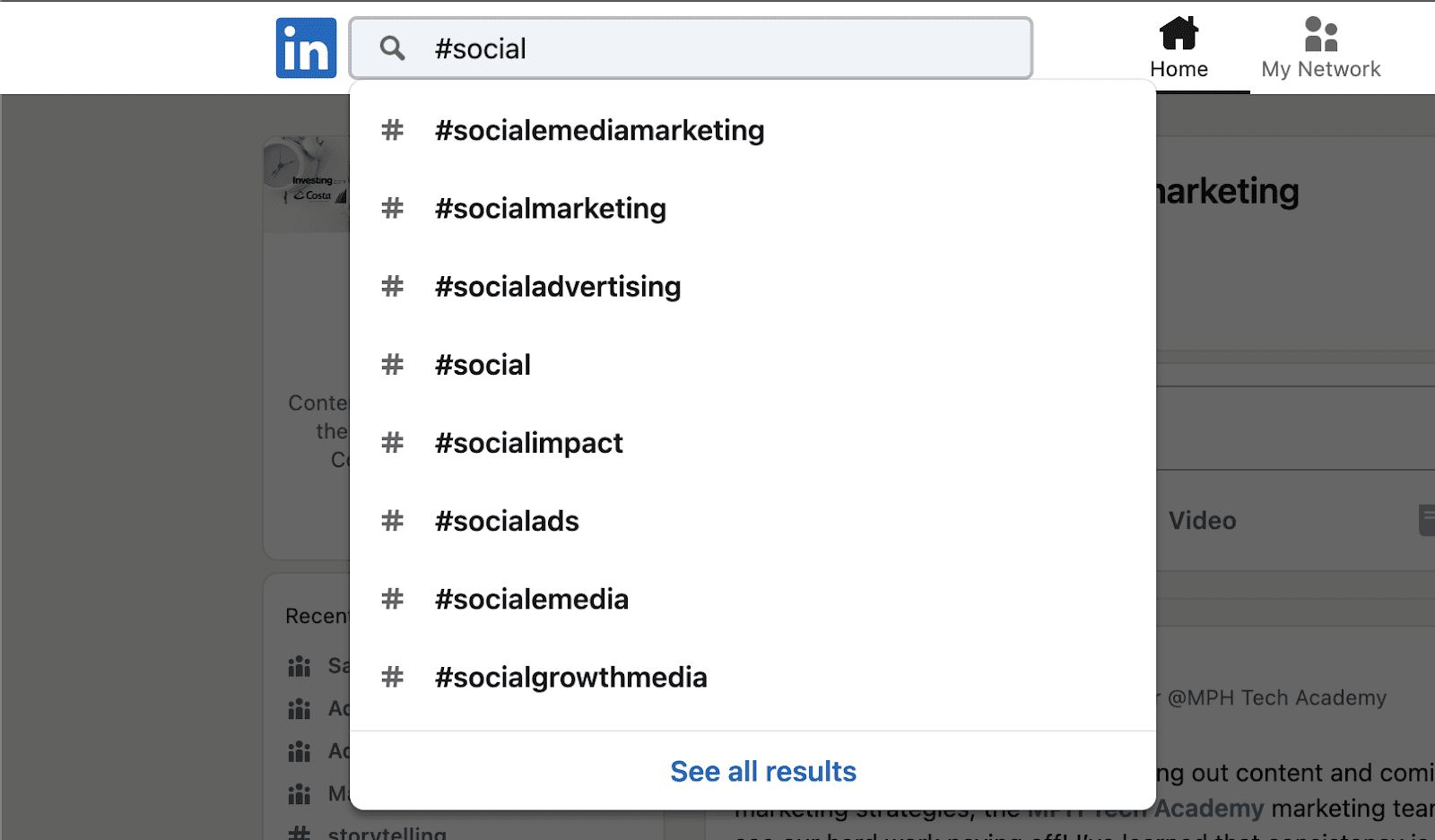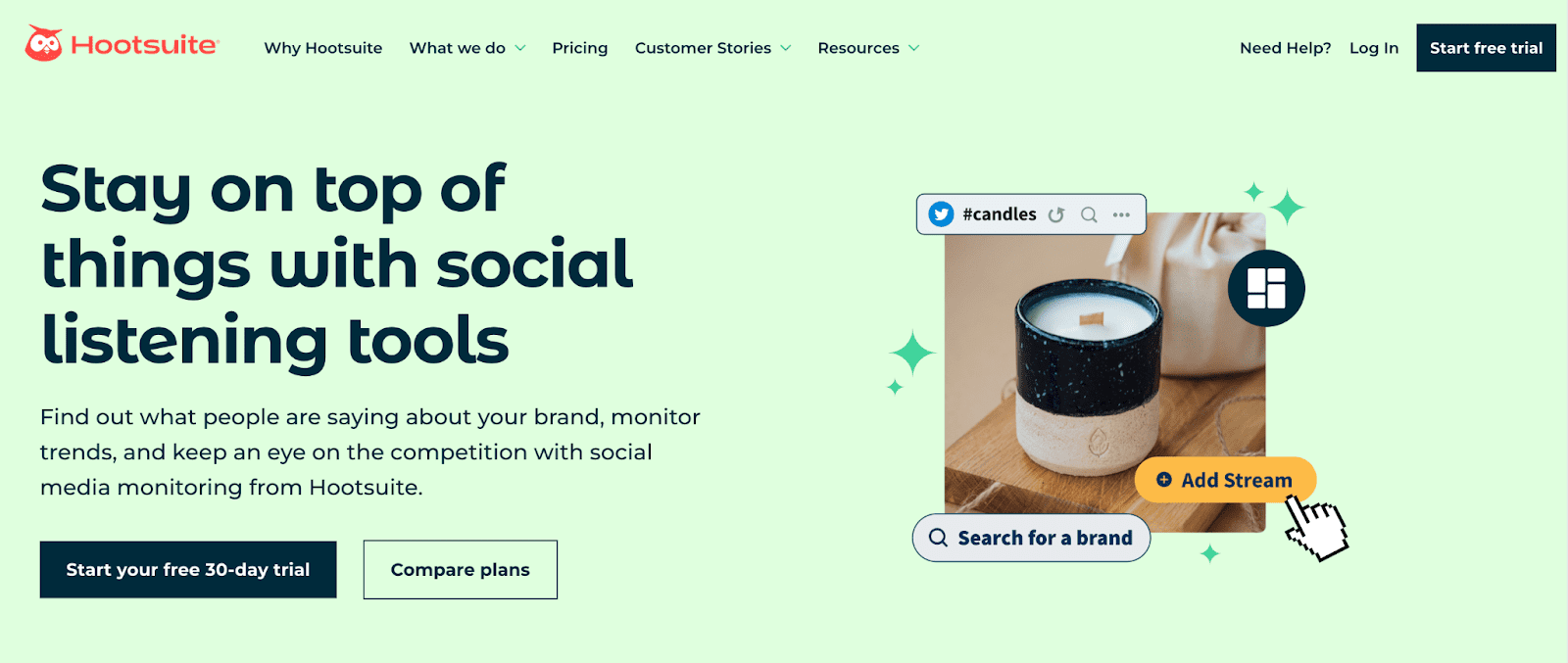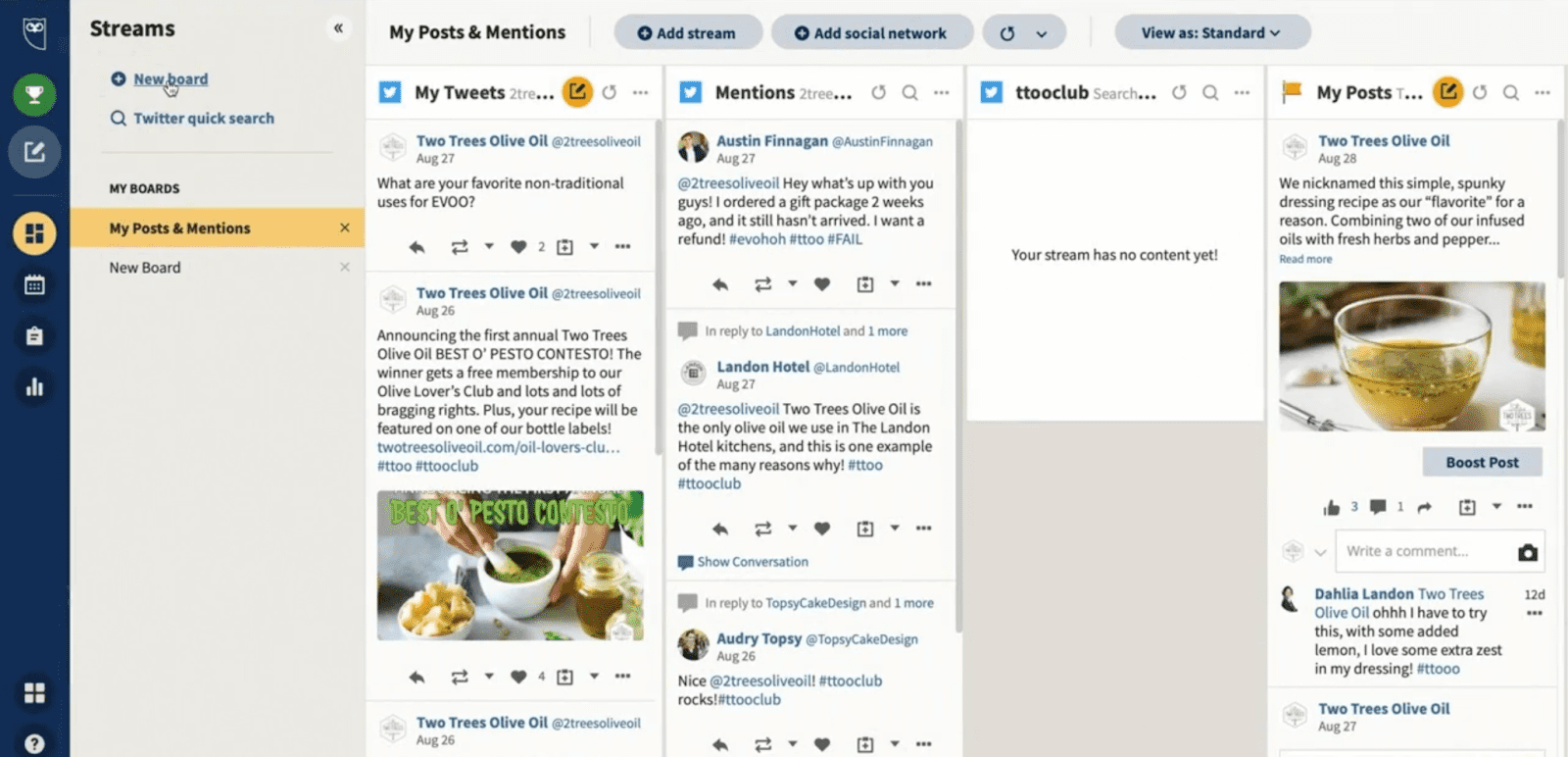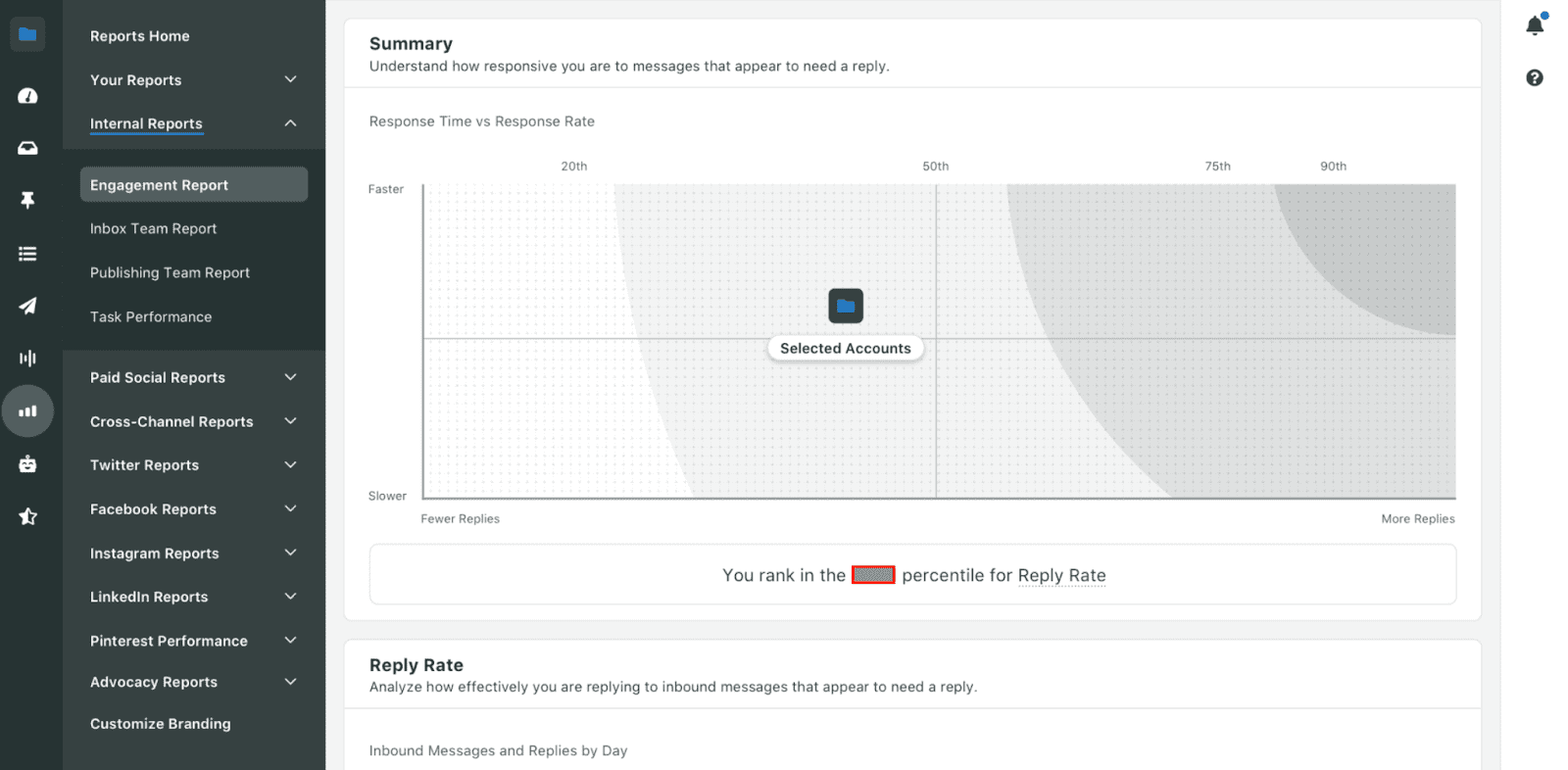How To Increase Performance With Social Media Monitoring

Looking to set up social media monitoring for your brand?
It is an excellent step that can provide invaluable information about how people perceive your brand online.
Social media monitoring can enhance your customer care strategy and prevent any potential PR crises. It does, however, require utilizing some social media tools.
In today’s post, let’s focus on how to perform social media monitoring in 2023 and conveniently collect many essential insights.
Frequently Asked Questions
What Is Social Media Monitoring?
Social media monitoring refers to the process of tracking mentions, hashtags, keywords, and other social media interactions related to your brand and industry.
It can also extend to monitoring competitors’ interactions. You can combine various onsite and third-party analytics tools for an effective online media monitoring system.
Why Do We Need Social Media Monitoring?
Social media monitoring can benefit brands and businesses in various ways.
It includes gaining valuable metrics and insights regarding your brand’s perception, monitoring customer sentiment, responding to customer queries, and more.
Media monitoring can also keep you on top of the latest industry developments and your competitor’s performs
nce.
What Is the Best Social Media Monitoring Tool?
Hootsuite is the best social media monitoring tool if you don’t mind paying for its comprehensive features and compatibility. It also owns the Nexalogy app, which offers free powerful visual analytics and research.
Sprout Social is another paid monitoring tool preferred by many social media administrators.
What You’ll Need To Perform Social Media Monitoring
Whether you want to perform social media monitoring manually or using social media analytics tools, you will need the following:
- A device connected to the internet. You may also need to install some social media management tools or access them using a web browser.
- Access to your social media accounts on different platforms. It is especially required for manual social media monitoring methods.
- Access to paid social media management tools. You should keep your credit card or payment information at hand to utilize the premium monitoring tools.
How To Perform Social Media Monitoring: Step-by-Step Instructions
Setting up an effective social media monitoring system for your brand can provide many actionable insights, like the best time to post on social media and beyond.
It also helps monitor conversations regarding your brand and products, ensuring a more optimized customer relation strategy.
You must act upon the qualitative and quantitative insights as part of the social media listening process.
1. Brainstorm the Search Terms You Must Monitor
Tracking your brand mentions alone won’t get you far in achieving your media monitoring goals.
Effective social media monitoring involves tracking different hashtags and search terms associated with your brands to avoid missing out on anything.
You must find all your brand-related search terms and keywords for effective results. Some keyword examples include:
- The handles and hashtags used for your brand, company, and product (or service) names.
- The name and positions of the figureheads and public spokespersons, including CEOs, communication heads, etc.
- Your slogans, branded campaigns, and any common misspelling of your brand and product names.
Having deep consumer insights and how they communicate online can help find the trendiest search terms.
You should include similar search terms for your competitors to gain insights about their brand image and strategies.
Next, you should expand your search into the industries, locations, and social media platforms related to your business.
Hashtags like #socialmediamarketing or #TikTokers can give you insights about everything happening across your industry and platform.
You can also track the latest events and industry-wide thought leaders to understand the latest trends and any ongoing shifts in consumer behavior.

Pro Tip: Monitor Slang Terms and Different Languages
It has become standard for users to use pet names, acronyms, and slang terms on social media to refer to something.
Find out if it’s the case for your brands and products and include those in your monitoring plans.
You should also include similar terms in different languages if your business locations serve a diverse demographic with several spoken languages.
2. Choose Your Preferred Media Monitoring Process
There are no set rules for running an effective social media monitoring process.
You can set it up in several ways based on your brand’s reach, needs, and marketing budget.
Experienced social media marketing managers utilize a combined monitoring strategy offering the most optimal solution for their business.
Option 1: Manual Social Media Monitoring
The most humane process requires manually logging into different social media platforms and searching for the related keywords and brand mentions.
It is a time-consuming and laborious process that might be viable for small brands with a minimal social footprint but not as effective for prominent brands.
The manual process involves using different platform-based analytics tools to gain critical insights.
Most analytics tools offered by social media platforms are free, so the labor cost is the only expense of this process.
Your team must be diligent in keeping track of your social mentions, public messages, and competitors.
It also requires the ability to transform observations into actionable insights.

Option 2: Automated Social Media Monitoring
Many social media management tools are available online, offering in-depth social media monitoring features.
Standalone monitoring tools are also available with various features for data visualization, location mapping, broader website analysis, social media analysis, etc.
The best tools for social media monitoring include:
- Hootsuite
- Sprout Social
- Meltwater
- Mentionlytics
- Nexalogy
Some offer free monitoring tools, but the most potent features require a paid subscription. For the extra cost, you will enjoy various social media listening features and support for most social and web-based platforms.
Tools like Sprout Social can monitor well-known review sites to track posts relevant to your brands and business.
Different platforms offer specific features and brand monitoring tools, so you must explore the details to find the perfect fit for your needs.
Take advantage of the free trial period to dive deep into a paid social media management tool before deciding whether it’s worth paying for.

3. Set Up Your Chosen Social Monitoring Tools
Once you decide how you want to monitor your social mentions and interactions, you can set up the required tools. The exact steps vary depending on the specific software and website you deem fit for your purpose.
A manual setup may involve assigning tasks to specific social media marketing resources, with larger organizations requiring more complex team dynamics.
You may also need to obtain access to different analytics tools and create a spreadsheet to track the conversation and sentiment.
In contrast, automated monitoring requires setting up your parameters and frequency for saved searches.
You must also save your search terms for your brands, competitors, and industries.
In some social media management tools, you can set alerts for unusual events, like when your brand’s social conversation goes through the roof or sentiment dies down.
Setting up alerts during the release of branded adverts or campaigns is also beneficial to see how it affects your digital marketing goals.

4. Analyze Your Mentions and Act Upon the Insights
You must visit your monitoring streams from time to time and analyze the conversation and sentiment on social media channels.
Sentiment analysis is paramount to staying in the know and maintaining your brand reputation.
You may also get to rectify any PR blunder before it takes your brand reputation through the gutter.
While analyzing, focus on the following:
- Determining how relevant your insights are and adjusting your search parameters accordingly.
- Identifying your most prominent advocates who regularly vouch for your brands, products, or services online.
- Researching hashtags or search terms that you may want to pay attention to in the near and long-term future.
- Calculating your response time for brand mentions and messages in the social inbox and comparing them against your competitors.
- Utilizing top-performing post inspirations and evaluating your hashtag incorporation strategy in your posts.
Once analyzed, ensure you act upon the insights with a comprehensive social media listening strategy.
Otherwise, what’s the point of monitoring!
Create a performance report with observations for improvement, primarily if you use a manual method or collaborate in a team.
It is excellent to boost morals and keep everyone in check.
Most importantly, reevaluate your monitoring strategy to ensure you track everything essential and filter out the unnecessary ones.

Similar Tutorials To Check Out
Wouldn’t you like to extend your social media management skills beyond monitoring?
It’s pretty simple to learn, as you can see in the following tutorials:
- How To Perform a Social Media Audit: Investigate which strategy works for your business and which needs improving by learning how to perform a social media audit.
- How to Maximize Social Media Engagement: Keep your customers and followers interested in your brands by exploring how to maximize social media engagement.
- How To Reply To A Message On Instagram: Be consistent with your brand’s communication strategy by reading how to reply to a message on Instagram.
Wrapping Up
Conducting social media monitoring is getting complicated and straightforward at the same time.
While the ever-increasing social media platforms make tracking everything challenging, the availability of advanced tools minimizes human burden.
With the tips and tricks detailed in my guide, you can set up a manual or automated social media monitoring process suitable for your brand. A semi-automated system should also have the strategies mentioned above.
Do you need further clarification? Please feel free to comment with your questions and feedback. It would also be excellent if you shared my guide with your online followers, colleagues, and friends.


Responses